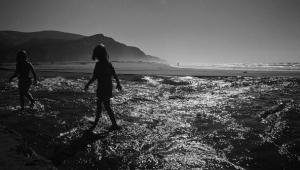Dealing with High Contrast Scenes with Your Digicam
 |
|
|
The problem is the ability of the film or sensor to record within a certain range of values, and when that range exceeds its capabilities some values, thus picture information is lost. Some photographic mediums, such as negative film, can handle a fairly wide range of those values. Slide films and digital sensors, however, are less tolerant of widely diverse light values. At times a decision must be made whether to sacrifice shadow or highlight detail. For the most part, the best course is to bias exposure toward the highlights, or brighter areas of the scene. Overexposed highlights in slide film yield little or no density, and very bright areas, improperly recorded, become very harsh or do not record any density at all. Overexposed highlights with digital sensors create similar problems of "burnout" and getting any image information on a resultant print is near impossible, or the corrections look false and artificial.
 |
|
|
Fortunately, digital photographers do have some "outs" with this problem. One is to work with the "contrast" setting on the digicam, a programmable way to suppress contrast. The contrast settings are generally found in the menu options, and may have a simple --1, normal and +1 setting, or may be more complex with more steps. In essence, the --1 setting will flatten the contrast curve of the recorded image, and may help overcome the problem with harsh highlights in some scenes.
 |
|
|
One way around this is to make an exposure reading for the highlight, or brighter areas. This suppresses, or controls the highlights better, so you can read more detail in the leaves. But when you bias exposure for the highlights you are suppressing all the tonal information, often driving down the shadow areas where they can become too dark. This is how a slide film photographer would handle this problem.
Some digicams allow you to bracket contrast settings. You might want to work with this feature in a number of lighting situations to get a handle on how it can improve your results. Indeed, there are times when adding contrast, such as on overcast days, can be helpful as well. In addition, a contrast "kick" can also enliven colors.
 |
|
|
Keep in mind that contrast bracketing is different than exposure bracketing,
the latter being a way to change how the light values themselves are being recorded
on the medium's recording scale. Contrast bracketing or correction is
a way to control high-contrast scenes, often without sacrificing the true sense
of light you perceived when you originally made the picture. It's a way
to help bring the sensor into line with the ways your eyes naturally adapted
to the light.











































